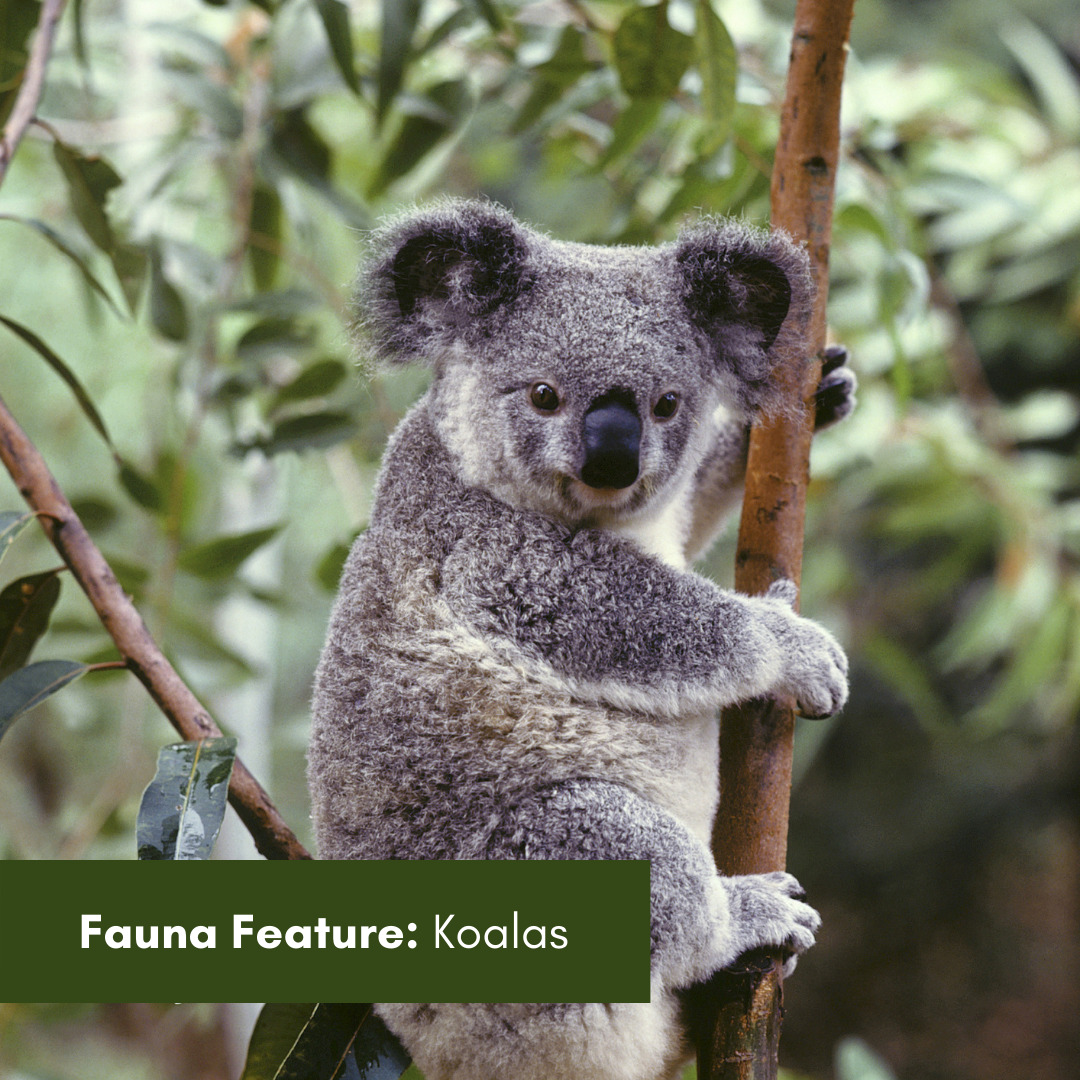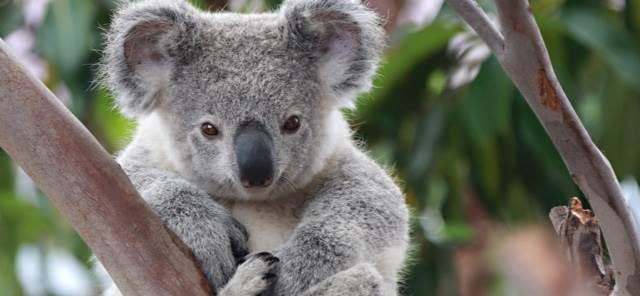On the 3rd of May Australia celebrates Wild Koala day. It is the perfect moment to raise awareness of the endangered koalas and their threatened habitat. For this occasion, we introduce you to the koalas of the Hunter (Phascolarctos cinereus cinereus) and a few facts that you may not know about this emblematic Australian species.
The origin of the name “koala” comes from “gula” or “gulamany”, an Aboriginal word from the Dharug people meaning “no drink”. Koalas barely drink water as most of their water intake comes from eucalyptus leaves. Interestingly, the greek scientific name Phascolarctos cinereus means “grey bear with a pouch”. However, we know that koalas are not related to bears. There are three subspecies of koala and although there are no notable genetic differences, each subspecies needs to be managed differently according to their habitat needs.
Retrieved from Port Stephens Council (NSW Government)
Koalas have a very close relationship with their trees. They are known for being tree huggers; during warm days, koalas tend to move to lower parts of the tree and hug the trunk to squeeze their butts against the coolest spots. They are also extremely picky eaters. Out of the 900 species of eucalyptus trees found in Australia, koalas tend to only choose between 30 to 60 of them, avoiding the ones with smelly toxins and low protein contents. They have an incredible sense of smell to detect seasonal variations of toxic oils in eucalyptus leaves. Koalas have a powerful liver to clear out the eucalyptus toxins, this makes it challenging when vets have to assess the correct dosage of medications. Young koalas eat their mother’s feces called “pap” to obtain the bacteria needed to digest eucalyptus.
Many koalas are vulnerable to chlamydia with nearly 90% of females carrying the bacteria. The strain found in koalas is different from the one infecting humans. In the past, chlamydia was essential to naturally control koala populations. When chlamydia-free koalas were introduced, the population doubled rapidly, decimating the trees. Now chlamydia is a severe problem as populations are declining due to a combination of habitat loss and retroviral infections by the koala retrovirus (KoRV), resulting in AIDS-like symptoms.
In the Hunter, nearly half of eucalypt forests have been cleared. Koalas are listed as vulnerable by the NSW government. Still, the Hunter koala population has been estimated to range from only 60 to 100 individuals, while just 59.5% of potential habitat is left. However, other accurate population size estimations are not possible due to the lack of data. It is crucial that every sighting is recorded and documented adequately on Atlas of Living Australia. Follow this link to find out more about how to register a sighting: https://www.ala.org.au/home/record-a-sighting/
The majority of koala sightings are located in the Lower Hunter near Port Stephens, Newcastle, Cessnock and Taree. For Landcare groups, restoration projects of koala habitat should favour the following tree species depending on the plantation site location:
- In the Lower Hunter, koalas prefer tallow-wood (E. microcorys), forest red gum (E. tereticornis), swamp mahogany (E. robusta), parramatta red gum (E. parramattensis), orange gum (E. bancroftii) and cabbage gum (E. amplifolia).
- In the Upper Hunter, trees providing ample shade are highly recommended. This includes: river red gum (E. camalduensis), white box (E. albens), yellow box (E. melliodora), tumbledown gum (E. dealbata), dwyer’s red gum (E. dwyeri), orange gum (E. prava) and western grey box (E. microcarpa).
If you want to contribute to koala conservation by planting trees in your local area, contact your local Landcare group to guide you with native species selection. Make sure to call your local wildlife rescue group if you find a sick or injured koala. Everyone can help to ensure a bright future for koalas in the Hunter and in Australia.
Very first published natural history illustration of a koala. From George Perry’s book Arcana. 1810



